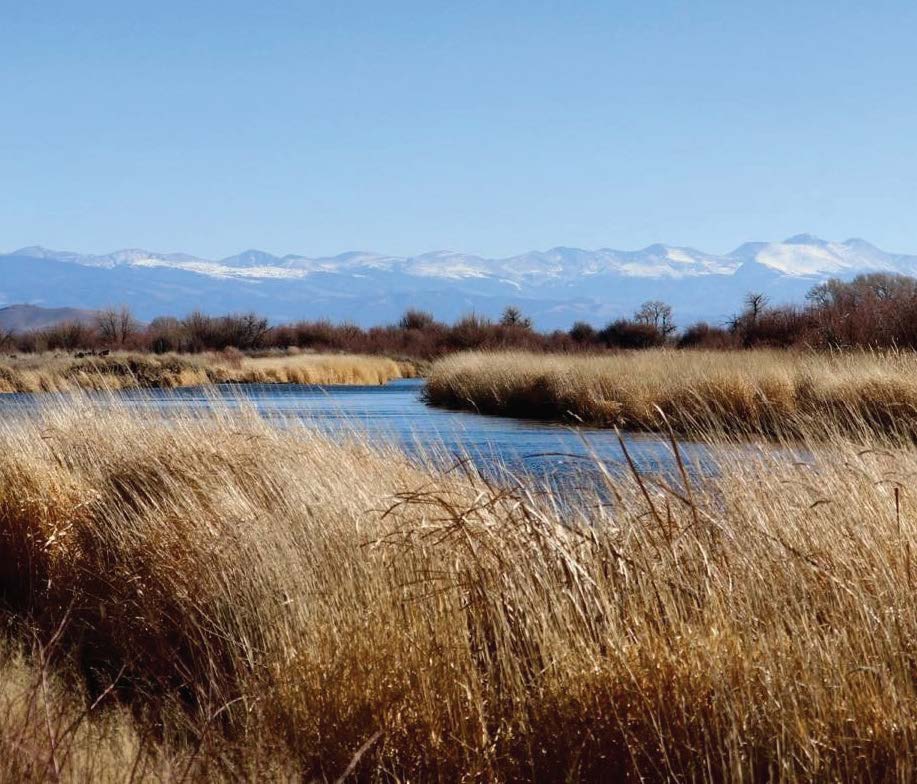Length: 3.75 Miles Round Trip
Difficulty: Easy
Driving Instructions
From Alamosa, at the junction of US 160 and CO Highway 17 on east end of town, drive 2.8 miles east on US 160 until you see the sign for the Alamosa Wildlife Refuge. Turn right (south) on El Rancho Lane and drive 2.5 miles south to Visitor Center. Once you cross the railroad tracks, the road turns to gravel and the refuge is on both sides of the road.
Trailhead Parking
Parking is freestyle in the gravel parking lot behind the Visitors Center. The sign for the Nature Trail is there and near the 3.5 mile driving loop. Hikers and bikers are allowed on the driving loop. FREE parking. Pets allowed on leash only.
Terrain
The wide trail is a combination of soft sand and dirt. It is flat open country with cottonwood trees and high brush in places.
Description
The trail follows the Rio Grande as it turns south toward New Mexico. It also follows a human made canal used to recharge the wetlands and control outflows of the river. Unobstructed views of Mount Blanca across the historical and natural wetlands home to numerous aquatic plants and animals. The bird species change with annual migration patterns.
Significance
Thousands of acres of wetlands used to occupy the San Luis Valley. Fortunately, this one, and other wildlife refuges were established to provide natural habitat for native species and maintain the health of the waters flowing through the valley.
Elevations
7,536 feet downriver to 7,518 feet. Trail is basically flat.
Pleasures and Perils
The waters in the Rio in this part of the San Luis Valley flow peacefully downstream in ‘old river’ meandering. The almost natural wetlands have been here for thousands of years and look the same as the Ute and Navajo Indians saw them. Along with great mountain views, the wetlands are a host to numerous species of plants, mammals, birds and amphibians, which make up the unique wetland ecosystem. There is no cover if storms blow across the Valley. Caravans of coyotes patrol the trail at night on their hunting expeditions. Much of the dried scat along the trail is from coyotes, not dogs. They usually make themselves scarce during daylight hours, but one more reason to keep all dogs on leashes.
Notes
For an understanding of the valley, read the history of how the mountains and the valley work together to create these special places. Information is available at the Colorado Welcome Center in Alamosa or at the Wildlife Refuge Visitor Center.







